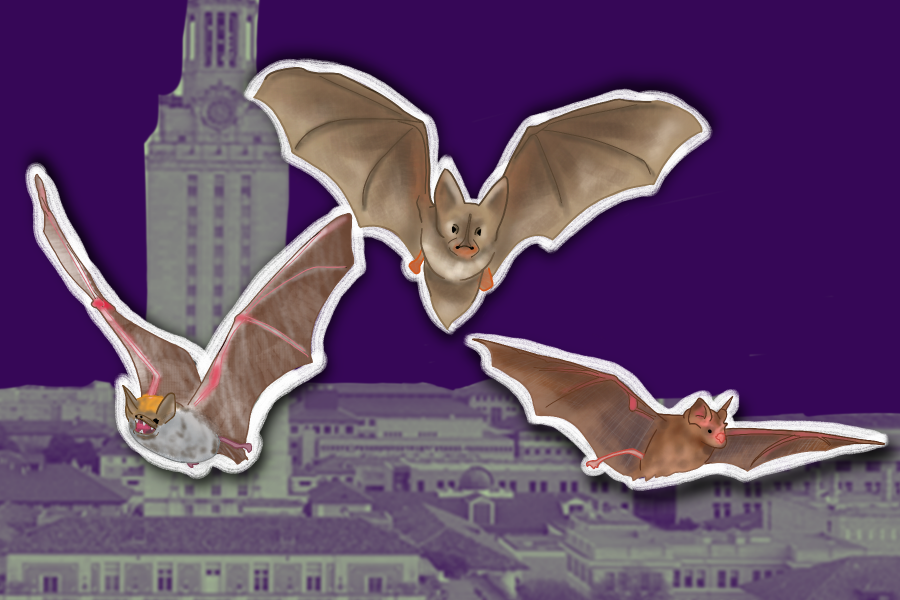The city of Austin is no stranger to bats. People gather in mass numbers to see the 1.5 million Mexican free-tail bats leave the Congress Avenue Bridge every night.
However, it is a very different experience seeing them fly out in the wild versus in your classroom, flapping chaotically.
Recently, a TikTok showing a group of bats flying up and down a dimly lit hall in the Physics, Math and Astronomy Building (PMA) gained popularity online. While many of the comments on the video were joking about the situation, some also criticized the University for not taking preventive measures.
According to the PMA building manager, John S. Estes, the bats likely came in through grout joints that were weathered down, which left holes for the bats to enter.
In order to prevent bats from entering other buildings, UT should check grout joints for weathering and update its buildings across campus.
Chemical engineering freshman Mina Hadzidedic, who personally saw the bats and created the viral video on TikTok, said she was concerned about bats entering buildings in the future.
“I’d say I was pretty worried,” Hadzidedic said. “Apparently (this) occurs often, and a lot of bats in Austin carry rabies.”
Carin Peterson, senior training and outreach coordinator at UT Environmental Health and Safety, said this is not the first time bats have entered a building on campus.
“Occasionally, bats do fly in by mistake,” Peterson said. “This is the time of year during which we may receive calls about bat sightings in buildings.”
There should not be a “time of the year” where students should expect to see bats in their buildings and classrooms.
The University is already equipped to deal with bats when they are inside the building. Environmental Health and Safety has a hotline people can call to report animals inside of buildings. However, while these services are useful, optimally we want to use them as infrequently as possible.
The problem is not handling the animals after they have come into the building, but rather the lack of prevention measures taken to ensure animals don’t get in at all. This is important not only for the students’ safety but for the safety of the bats, who provide a valuable service to the ecosystem, pest control and tourism in Austin.
However, this is not to fearmonger students. According to the Centers for Disease Control and Prevention website, most bats do not have rabies, which is the primary concern people have when talking about the animals.
In fact, less than one-tenth of 1% of wild bats carry rabies, according to a Mercury News article. However, without a vaccine, rabies is still a deadly disease. Peterson reiterated this point and said it's always best to be on the cautious side when dealing with bats.
“Bats are not dangerous animals in general,” Peterson said. ”This being said, they are wildlife and considered high-risk rabies animals.”
While this unexpected visit is timely during this Halloween season, students would prefer bats in the building to be limited to plastic decorations and not live animals.
In order to protect the safety of both its students and the creatures of Austin, UT should check its buildings for grout holes before the bats do it for them.
Vidales is an English freshman from Houston, Texas.





















